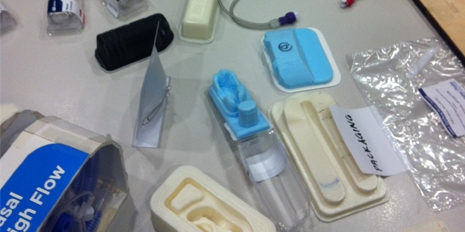
Life Saving Medical Design & Operations Master-class. - A Glimpse inside Fisher & Paykel Healthcare
Hair-nets, beard-nets, hoods, overalls and sticky floor pads – even the shoes can’t escape the dirt amnesty.
Fisher & Paykel Healthcare is no normal manufacturing facility. And so it shouldn’t be; it’s producing life-saving Class II+ medical devices. The medical device giant opened its doors to host the July
PDMA event at its Auckland facility; the second in the series of New Zealand’s great product producing open-door events following Gallagher in June.
The factory tour went behind the scenes and provide some insight into how a business delivers high-volume, hi-tech, high-compliance medical devices – no small feat. The facility is spotlessly clean and organised; lime green injection moulding presses look like something out of a NeXT factory; designed jigs and fixtures are precise. A small scale six ton injection moulding press pops out delicate neonatal nasal cannulas while automated robotics shrink wrap pre-coiled wire for anti-crush oxygen tubing. An operations master-class.
The F&P R&D team then flexed its lean product development credentials with examples of its set-based approach to developing the Optiflow Junior – a new nasal canula for delivery of
CPAP therapy to premature babies in critical care units. Most impressive was their lean approach to taking 12 different concepts into ethics approved clinical trials in four different New Zealand hospitals and reaching over 100 babies.
The in-house toolmakers can turn out aluminium injection moulding tools in 24-hours to enable controlled production environment parts in production materials – a stringent requirement for clinical trials. Concurrently, the law team were drafting patents providing full protection during the trials. Good use of the NZ$ 516m annual revenue (8.1% dedicated to R&D).
If having your newly born baby in intensive care isn’t distressing enough, the face mask delivering respiratory support surely would be. But this design needs to be applauded (see this years
Best Awards) – it’s sensitive to the babies, parents and clinical staff requirements; the respiratory care is technically advanced and the industrial design is consumer grade. Even the packaging is a joy. We just wish all those lovely parts could be separated when thrown in the bin. They did manage to remove PVC from the nasal prongs though, which is hard to believe it was ever/still is allowed. Either way, this is a company in control and ultimately in control of our healthcare when we need it the most. Inspiring stuff.

Comments
Post new comment